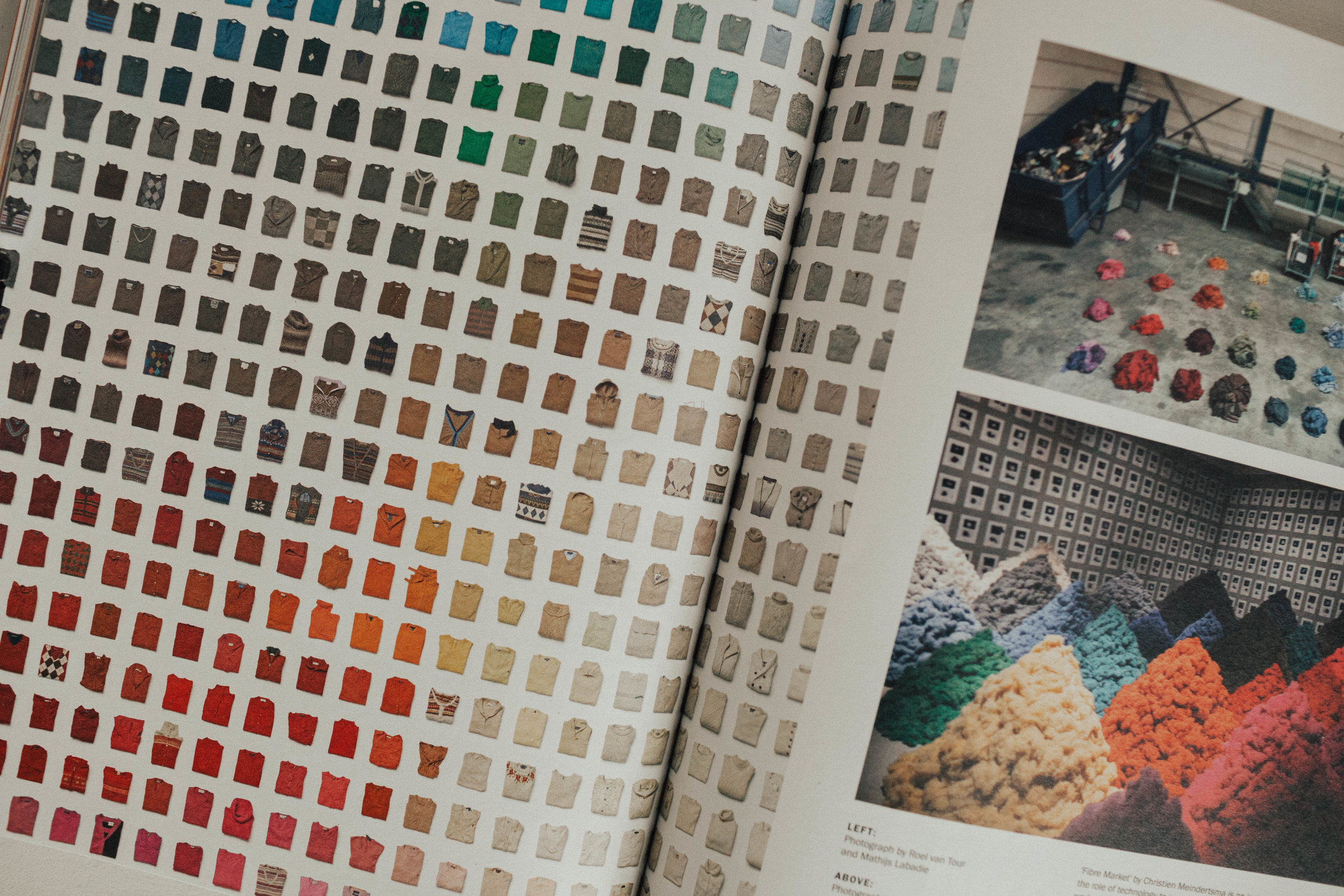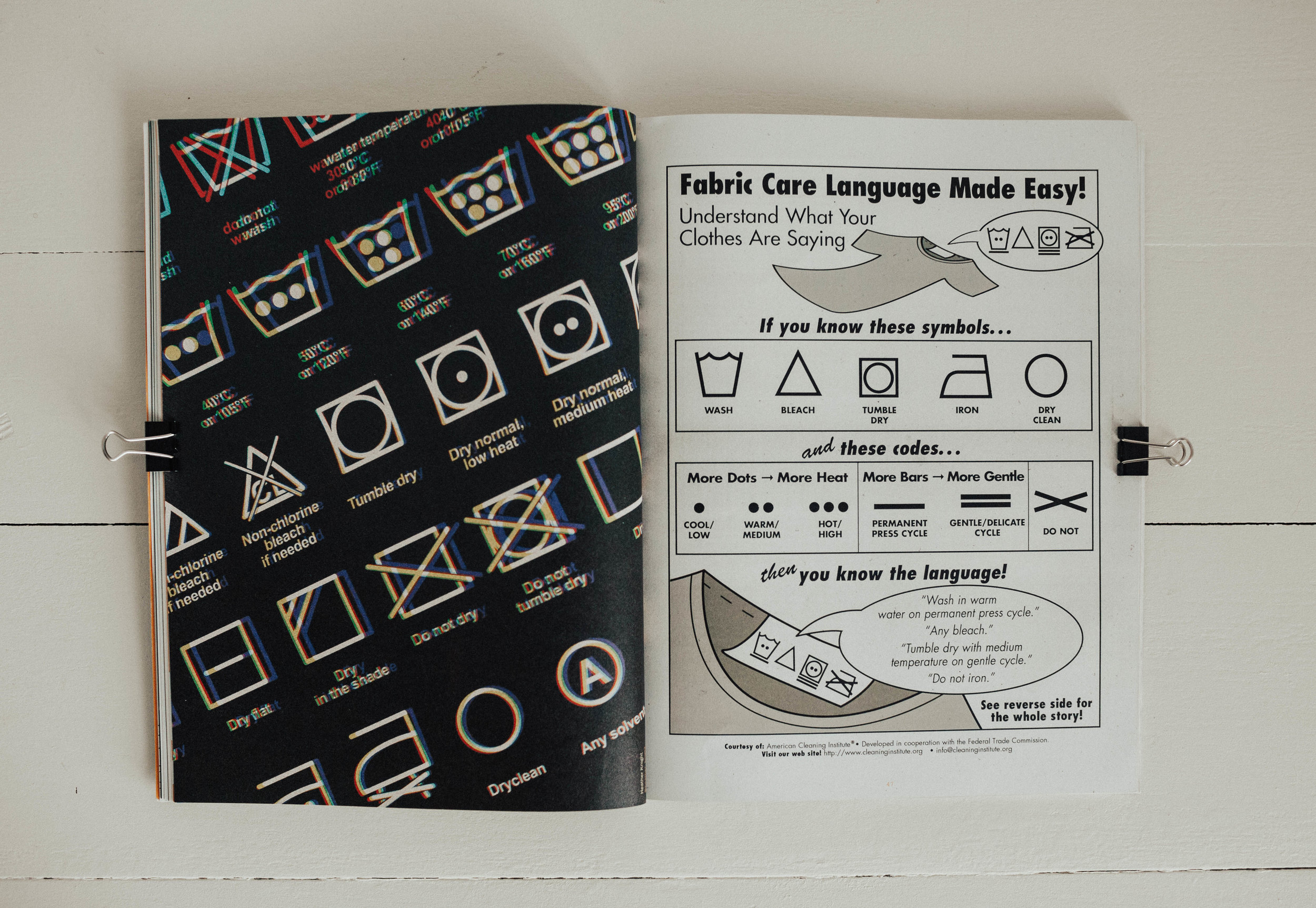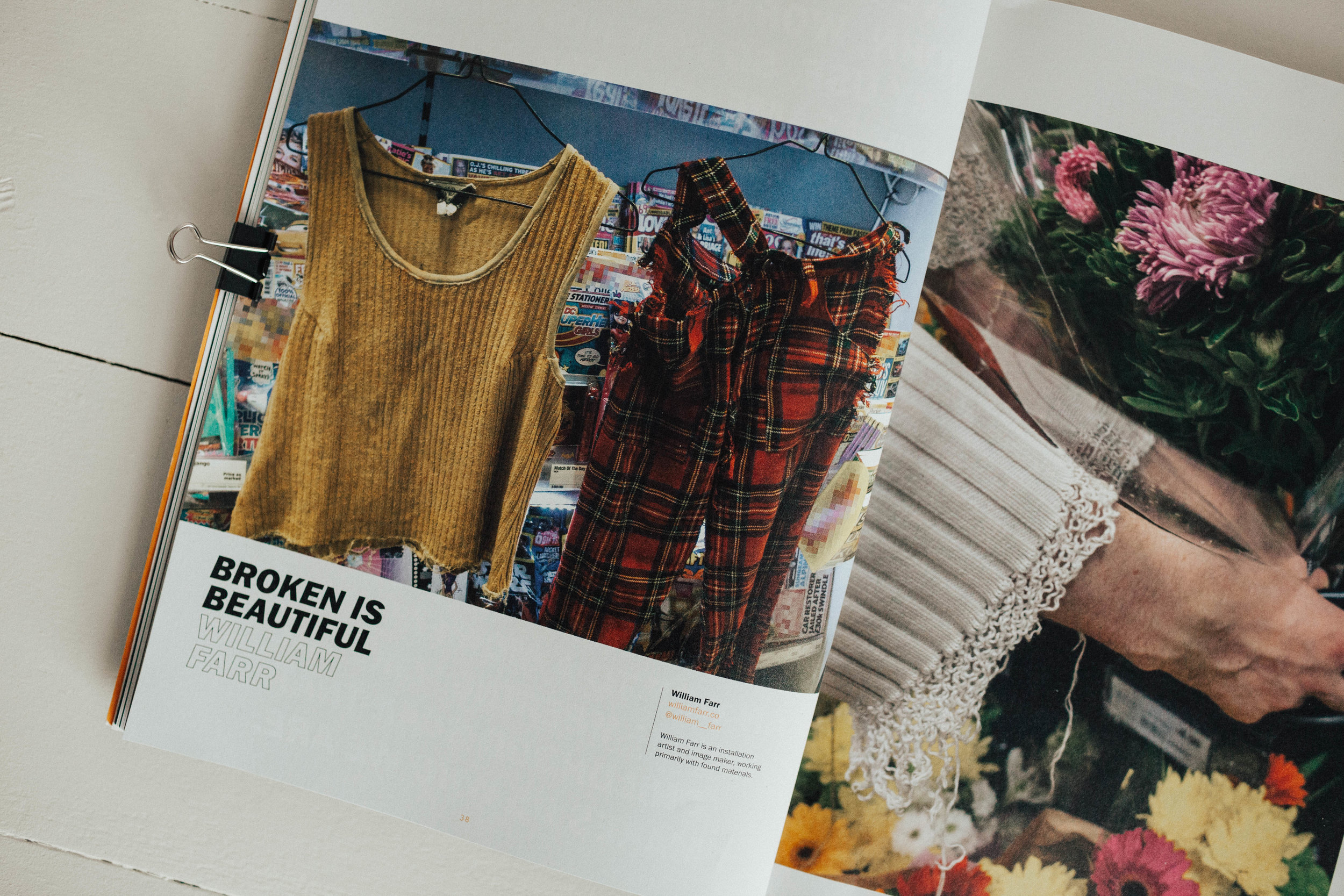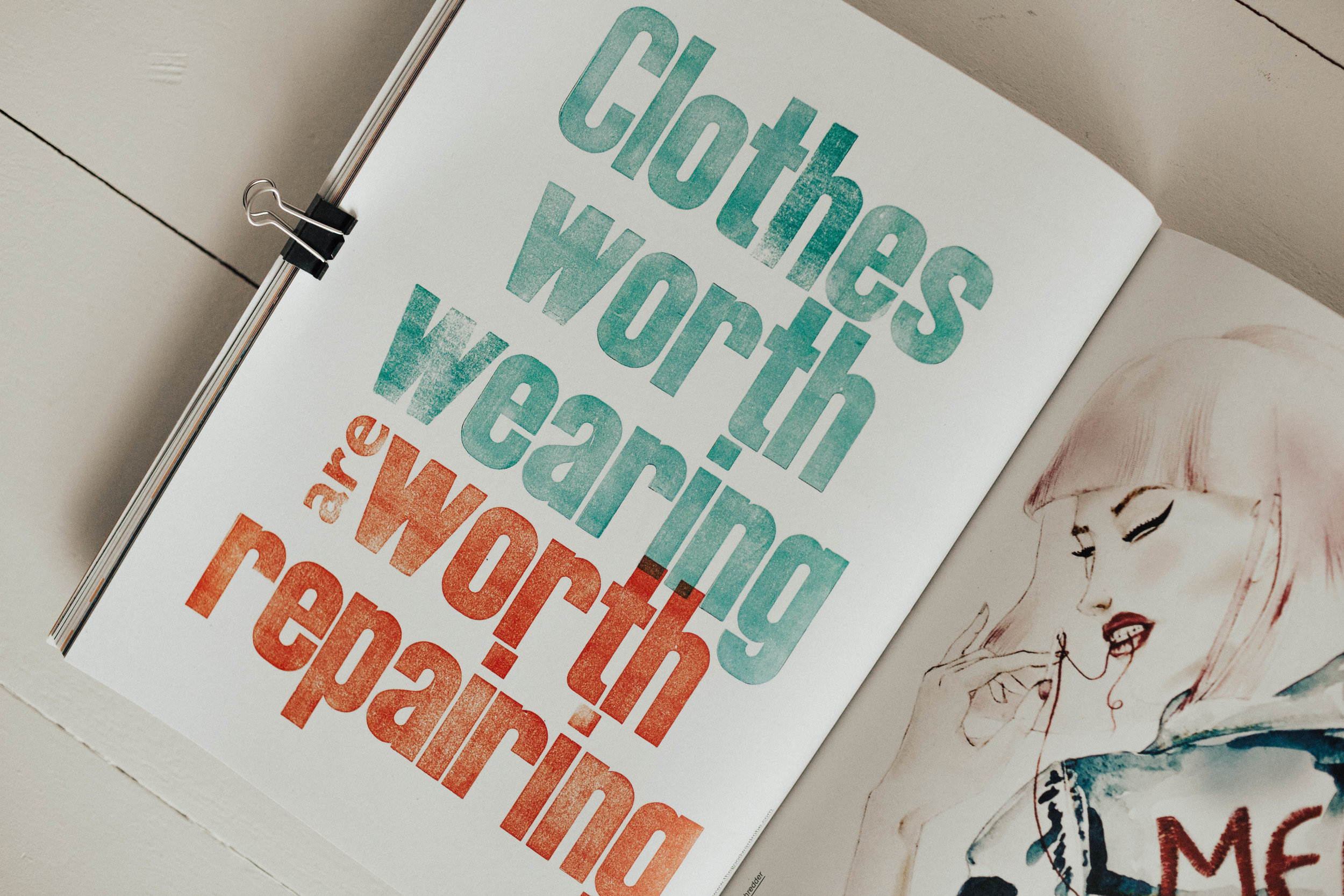5 Takeaways from the Fashion Revolution Mag
The resources, conversation, events and media that Fashion Revolution continues to create has been a huge educational tool for myself and The Good Wear. The information they provide is researched by experts in the industry and presented in practical and impactful ways for us readers. One of my favorite resources is the Fashion Revolution Fanzine - a magazine style book filled with material on the ethical and sustainable fashion industry ; You'll find quotes, stats, brand highlights, interviews, facts, advice on our clothing consumption and so much more. In the Fall of 2017, Fashion Revolution put out their 2nd fanzine and it's full of amazing and useful content.
So if you're not picking up your own fanzine this year, this post is for you - a recap of info that can be helpful in your responsible style journey.
what’s fashion revolution—
If you've been following along with The Good Wear for any time, you've heard some talk about Fashion Revolution - a non-profit organization based out of the UK that advocates and educates for the ethical fashion industry by highlighting global concerns for labor + environmental safety, fashion brand details, educational resources, interviews and so much more.
The organization has done some huge industry disrupting projects and campaigns to raise awareness around what goes behind the scenes of creating our clothes. If you've seen the phrase or hashtag of 'who made our clothes', then you've seen one of Fashion Revolution's largest campaigns. Another, is the annual Fashion Revolution Week - surrounding the day of April 24th in honor of those who died in the Rana Plaza Bangladesh factory collapse in 2013 where close to 2,000 textile workers were killed. *Read more about this and how to get involved at the bottom of the post.
the 5 takeaways—
To say this magazine has valuable content is an understatement. With the reliability of the non-profit, comes a creative and practical presentation of facts we, as consumers, should all know. When reading the mag, you'll be challenged at your perceived thoughts on the fashion industry, global manufacturing of the behind-the-scenes of who makes our clothes and provided practical call-to-actions that we can do on an individual and community level.
1. THE BEST THING WE CAN DO IS BUY FEWER, BETTER THINGS
I keep hearing this sentiment over and over again. And it continues to be more true the more we speak on consumer habits, fashion trends and personal wardrobes. With new trends and styles advertised daily, we've been convinced that buying more at a cheaper price to keep up is the better deal. But with more research, evidence and growing waste, it's evident that this is not the truth that we should be following when we shop.
Fashion Revolution makes a big argument (and I agree) that if we take time to buy fewer, higher quality, well made and loved purchases, we'd be more satisfied with our wardrobes and our money would be better spent in the long run.
2. WE MUST QUESTION WHY WE FEEL COMPELLED TO SHOP
Another challenge from the Fanzine was an internal one for all of us - why do we feel compelled to shop? Similar to buying fewer, better things, I love this takeaway because it's a convicting, habit-changing sentiment to reflect on. Do we shop because we see someone wearing the newest trend? Do we feel like we only are confident in new clothes? Do we have a problem with wasting our textiles and clothing that we already own?
This is a challenge that I'm continuously working on - to take a step back and attempt to move away from impulse purchases; By trying to take a more extended amount of time to discover if the item I think is cute, wearable and seasonal is a smart purchase. Curating a "wish list" has helped me through this mental process in order to not purchase an item right away. Or I work on creating a list of how I could wear the item with the clothing or accessories I already have in my closet. If I don't think it would get 30+ wears, I probably shouldn't buy it.
"This revolution starts with thinking differently about the clothes we buy and wear. To love fashion but to question why we feel compelled to shop. To be more mindful of the impacts of our shopping habits and the way we care for clothing."
3. LOVED CLOTHES LAST
The title of this Fanzine encompasses so much about the industry. The more we love the clothes we own and those we purchase, the better off our wardrobes will be in the long run. This is why second hand shopping, clothing swaps, repairing our clothes, and taking better care of each item can make a difference to avoid more clothing going to landfill. Because textile waste is an epidemic.
"The average person buys 60% more items of clothing and keeps them for half as long as they did 15 years ago. Yet 40% of clothes in our wardrobes are rarely or never worn. There are 3.6 billion clothes left unworn in the wardrobes of American citizens, a whopping 57 items per person.”
When we take the time to love the clothes we purchase and keep them in circulation, they will last. Feel confident in your clothes and purchases so we can make changes in the industry by our own personal consumer patterns - little by little.
4. A PATH TO CIRCULAR FASHION
Based on Fashion Revolution's report, circular fashion is "a strategy that aims to use the planet's finite resources in a more sustainable way... The aim is to keep materials in circulation in perpetuity." Everything in circular fashion (materials, trims, dye, thread) is set to be reusable and "designed with recovery in mind" with the goal to eradicate waste.
This Fanzine has opened my eyes to the huge problem that textile waste actually is. That we need better systems in place because what works in the past, just isn't enough. Goodwill is overwhelmed with donations, local charities can't always find a home for old clothing styles, and just what do we even do with those old socks or undergarments? Technology in breaking down textiles or new systems set in place through circular fashion is the future of how we can try to control this industry's waste issues. But it comes from all of us individually as well as the larger companies. But it's a slow slow process.
"As much as 95% of the clothes thrown in the trash could be potentially re-worn, reused or recycled but currently only 12% is re-sold locally. 56% goes to landfill and 24% goes to incineration, where they release further hazardous chemicals and greenhouse gases."
5. CALL TO ACTION
Lastly, the Fanzine provides several call to actions, that we as consumers are able to implement and take them into our own individual habits as well as sharing with those around us. We have a big voice with our consumer patterns and we're able to express openly with brands, government and other shoppers on how we can make a difference.
Here are some call to actions that can help you shop more responsibly : shop at least one responsible brand if you're shopping new this season, call upon your favorite retailer or brand to ask #whomademyclothes and how they are conquering textile waste with #lovedclotheslast. Ask your local or state government to pass legislation that keeps businesses accountable for textile waste.
“Being responsible about the clothes we buy also extends to being responsible about what we do with clothes we no longer want.”
join in—
Fashion Revolution Week is a global campaign that takes place in April surrounding the anniversary for the Bangladesh factory collapse in 2013. This year, Fashion Revolution chapters across the globe will be campaign, advocating, holding events and sharing details on the fashion industry during the week of April 23-29th. You can get involved in events around your city or find ways to make your own individual impact through Fashion Revolutions resources - like sending letters to the brands you love (H&M, Jcrew, Madewell, Anthropologie, LOFT) to ask 'Who Made My Clothes'.
Read about last year's 2017 Fashion Revolution Week impact on the fashion industry.
If you want more information on Fashion Revolution, you can purchase the 2nd Fanzine from Fashion Revolution until March 23rd.
















